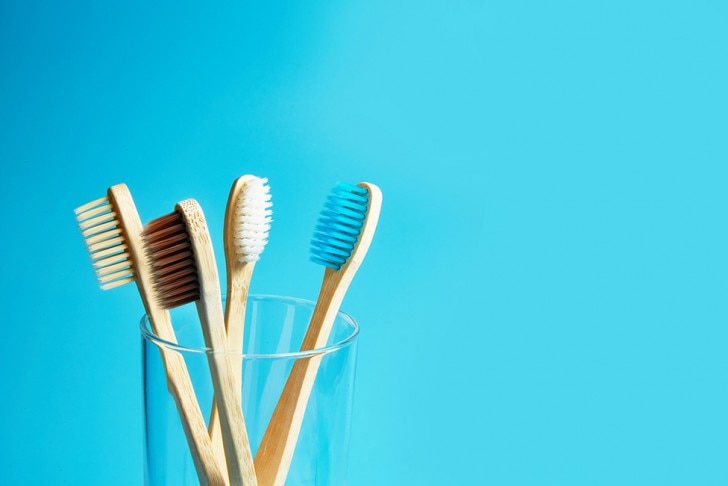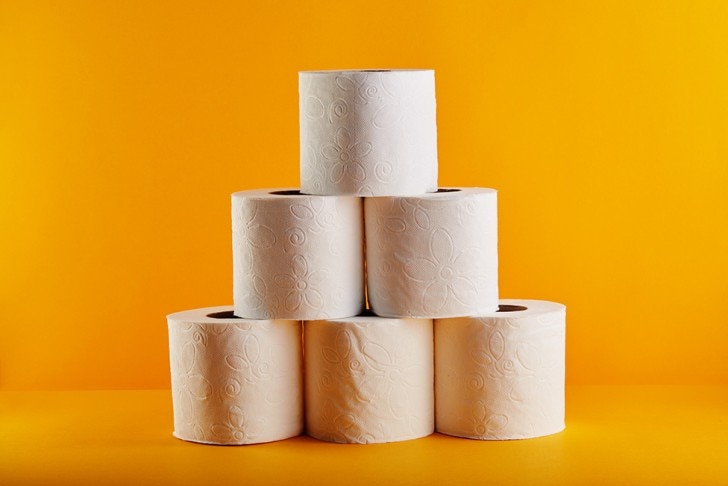BBC Earth newsletter
BBC Earth delivered direct to your inbox
Sign up to receive news, updates and exclusives from BBC Earth and related content from BBC Studios by email.
Sustainable living
It’s often the smallest room in our homes, but it’s also the room which has the biggest environmental impact on our Earth and oceans.
Here are 10 easy sustainable switches that you can make to clean up your act in the bathroom.

Who would guess that something as simple as the humble bar of soap would be a great way to battle climate change without leaving the house? A bar of soap uses less packaging than liquid soap or shower gel, takes less water to produce, and - being lighter and smaller to transport - has a lower carbon footprint. Plus, it cleans as effectively, smells as good and frequently costs less! You can even buy shampoo and conditioner soap bars. Make sure the soap you choose is sustainable, by checking in with companies like the WWF that list all the companies who use sustainable palm oil and scrub your conscience clean.

Did you know that it can take up to 500 years for a plastic toothbrush to degrade? This means that every single plastic toothbrush that has ever been made is currently still in existence! With most of us using up to 300 toothbrushes in our lifetimes, that’s a legacy the earth won’t thank us for. Ditching your plastic brush for a biodegradable bamboo one and switching from ordinary nylon (i.e. plastic) dental floss to a biodegradable alternative is a great way to make a positive change. Use an electric toothbrush? Try recyclable electric toothbrush heads to keep them from landfill.

Wet wipes cause 93% of sewage blockages in the UK, while fatbergs - the congealed lumps of fat, wipes and hair that fill our pipes - are the thing of nightmares. You probably know not to throw wipes down the toilet - even the ‘flushable’ ones don’t break down enough to not cause harm wherever they end up. Waving goodbye to wipes altogether (and single-use cotton pads/balls) and switching them for washable bamboo pads or a washcloth will take the dirty look off your cleansing routine and put more green in your cleansing routine.

You just have to look around your bathroom to see how many single-use containers there are in there. Choose cleaning and personal care products that come in recycled or biodegradable packaging and always remember to recycle where you can. Bulk buying products will reduce sending waste to landfill (or the ocean) and save you money too - just decant the product into your own smaller, reusable containers. Many shops now offer the ability to fill up directly into your own reusable bottles - see if there’s one in your area. Or go one better, pack-in the plastic altogether and…

Many household products come in single-use plastic containers and contain harmful chemicals. You’d be surprised to find that you probably have the ingredients to fulfil a lot of your bathroom needs in your house already in a green, non-toxic way: * Mix your own multipurpose disinfectant by combining 200ml of water with 12 drops each of tea tree oil and lavender oil. Cleans like a dream on every surface but glass. * Make window cleaner by filling a spray bottle with 130ml club soda and one big squeeze of lemon juice * To keep mould away after your shower, blitz your tiles with a mist of 260ml water and a few drops of tea tree oil. * Distilled white vinegar in your toilet bowl is tough on stains and kills 80% of germs.

27,000 trees are felled every day to make toilet paper accounting for 15% of worldwide deforestation. If you factor in the 168 litres of water needed to produce a single roll, and the tonnes of harsh bleaching chemicals which end up in our water supply - that’s a real bum deal for the environment and for us! Look for toilet paper that is 100% recycled and responsibly sourced or made from a more sustainable material like bamboo. Reduce how many sheets you use per visit. Or… join the 70% of the world population who don’t use toilet paper at all. Have you ever considered a non-electric bidet attachment for your toilet? Green, clean and you’ll never need to stockpile toilet paper again!

People recycle 40% less in the bathroom than they do in the kitchen, in spite of the cornucopia of recyclable packaging you’ll find in there - shampoo containers, bleach bottles, aerosols, toilet roll tubes… Adding a second recycling bin, basket or hanging bag to your bathroom is a great first step towards ensuring that nothing ends up in landfill that shouldn’t. Only buy products with recyclable packaging, rinse all containers to ensure there’s no product left inside and remove lids, small parts and pumps. For those items that can’t be put in your household recycling - toothbrushes, toothpaste tubes, contact lenses (which NEVER biodegrade) etc - look up the many free recycling schemes that run worldwide. Check if your make-up brand accepts returns of their own pots and palettes - many do. OR do the recycling yourself by ordering refills and reusing the original containers.

Two thirds of your household water is used in the bathroom, so what you do here can have a massive impact on your household water waste. Reducing your shower time will save on water and energy use - every minute reduces your water consumption up to a massive 15 litres. Adding a low-flow shower head to the mix could cut your water usage by half while retaining the pressure.

You might be surprised to know that toilets can use up to 30% of your household water - more than your washing machine or dishwasher. Save water on your cistern refill by filling a 1L bottle with pebbles and water, and popping it in your toilet tank, taking care that the bottle doesn’t touch any of the working parts. A five-minute job that will save 1 litre of water with every flush! Cut down on the number of flushes by only flushing what’s necessary and popping anything else in the bin.

Ever find yourself dancing around, waiting for a cold shower to run warm? Don’t let it go to waste - collect that water and use it on your plants. If your hot water comes from a mixer tap, set the water temperature at your boiler to your dream shower temperature, rather than using energy to boil water and then mixing cold into it. Fix any leaking taps (a leaking tap can waste up to 4 litres of water per day). Turn off the tap while you’re soaping your hands or brushing your teeth to save up to 6 litres per minute.
Featured image by © Tatiana Kutina / EyeEm | Getty